Breeding Mini Donkeys
October 21, 2022
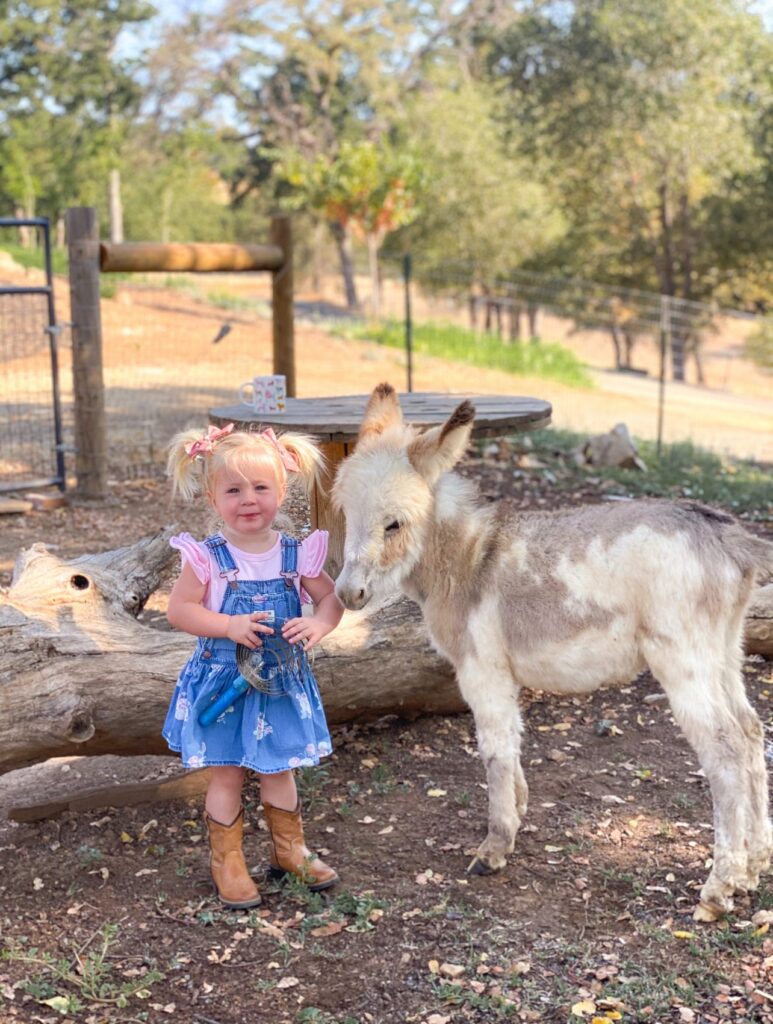
Years ago, we dreamed about the home we would build and the life that we would live on it, and now that dream is a reality. One of the things that help our farm run is breeding donkeys. Not only do they make great pets on our homestead, but donkey breeding can be a great side hustle for a homestead like ours. While the cost of care doesn’t leave a huge margin, it’s made up for with affection from these loving animals! We’ll walk you through the basics of donkey breeding, what type of extra care these pregnant mama donkeys need, and what type of care the foal needs once it is born.
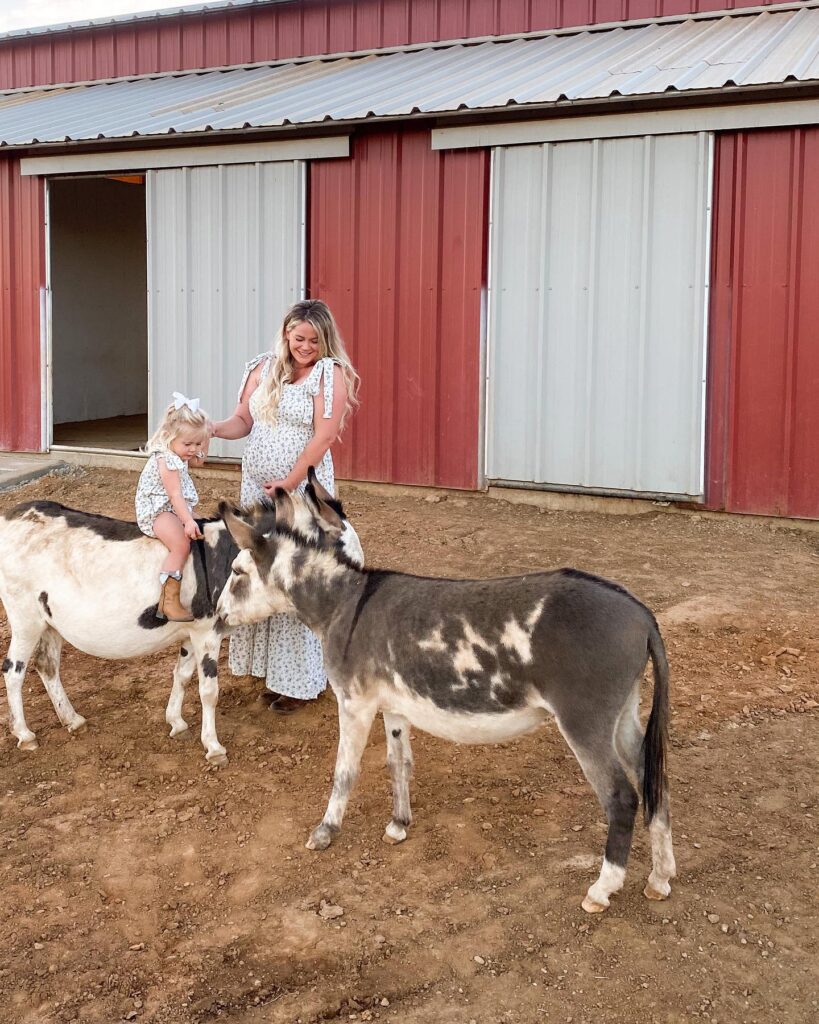
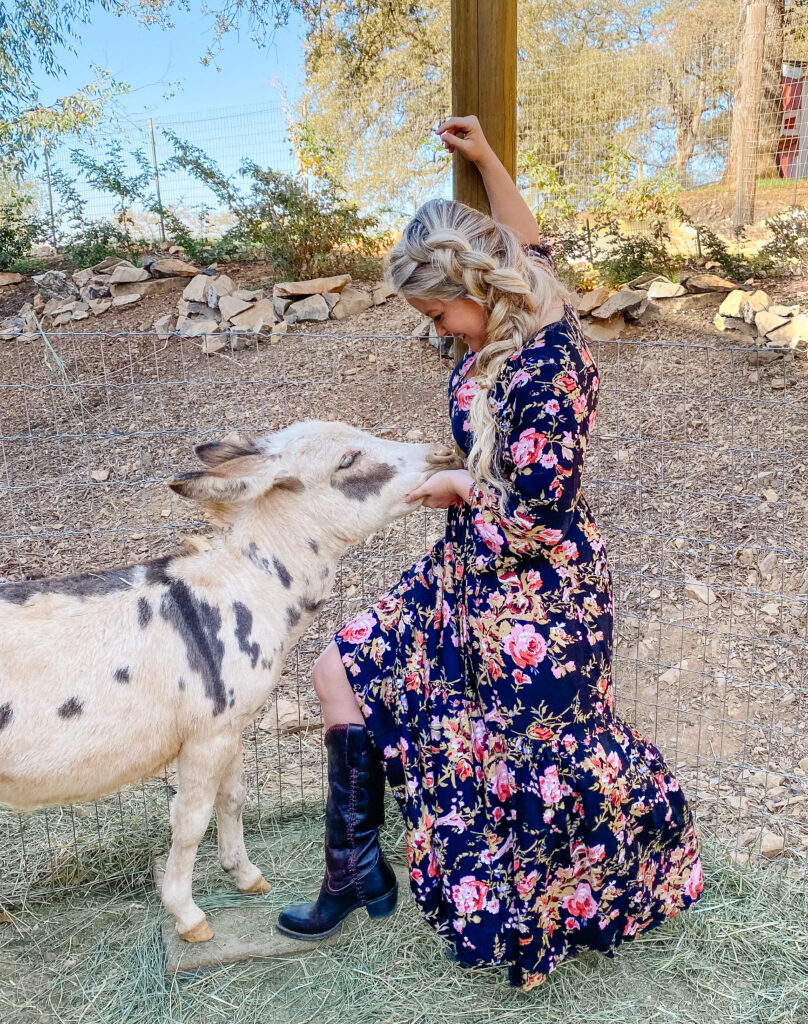
How do you breed donkeys?
Well, this may not be the right time and place to have a chat about the birds and the bees, but assuming we are all on the same page, donkey breeding is much like any other breeding. There are several different types of donkeys that are bred in the United States each year, but the donkeys that we breed are mini donkeys. The different breeds of donkeys are categorized by their size or color!
While many animals have what is considered a breeding “season”, donkeys have not been known to follow any particular schedule when it comes to breeding. The females will be ready to breed at about 1-2 years of age and will display symptoms of being in heat Some breeders will even wait until the female is 3 years, to ensure that she has reached her full height. As long as there is a male nearby when your female is in heat, you won’t have to do any work to ensure that you are successfully breeding donkeys. The male will need anywhere from 5-30 minutes to officially complete the breeding. Females typically enter into heat regularly, so if it doesn’t take right away, don’t worry. Donkeys are pretty easy when it comes to the conditions that they need to reproduce.
The gestation period for donkeys is over a year, at an average of 368 days, so donkeys can really only breed once a year at most. Breeding donkeys has been such a fun adventure for us and we have loved learning all about these wonderful creatures and how to properly care for them. It’s always rewarding to produce healthy, happy miniature donkeys!
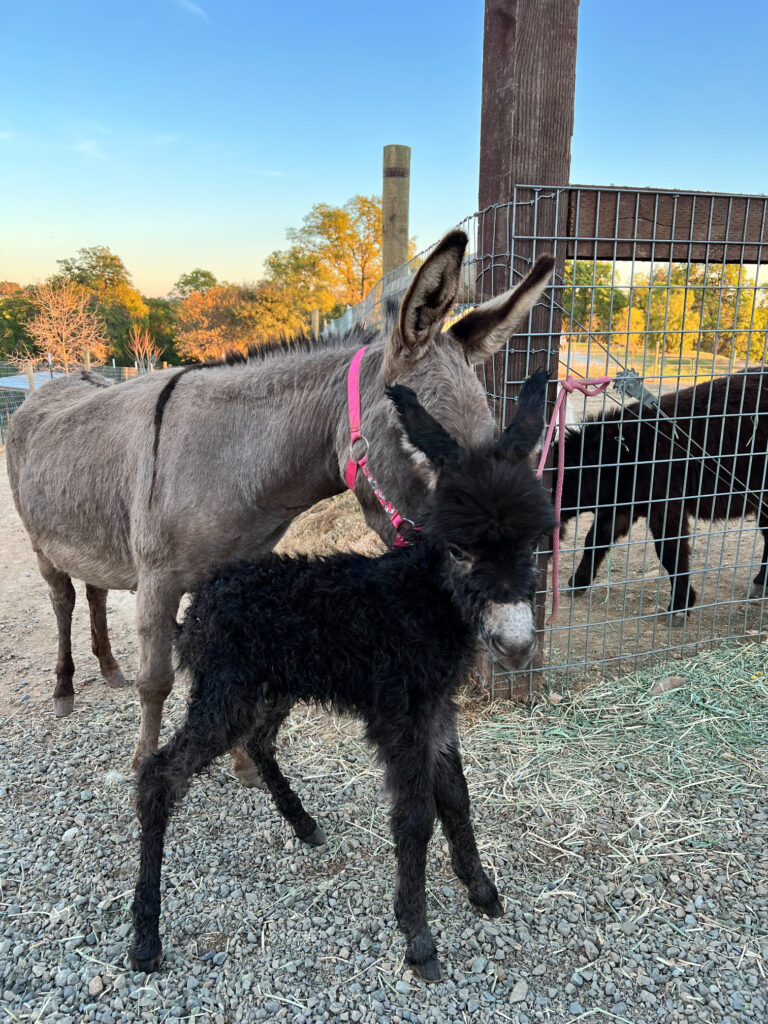
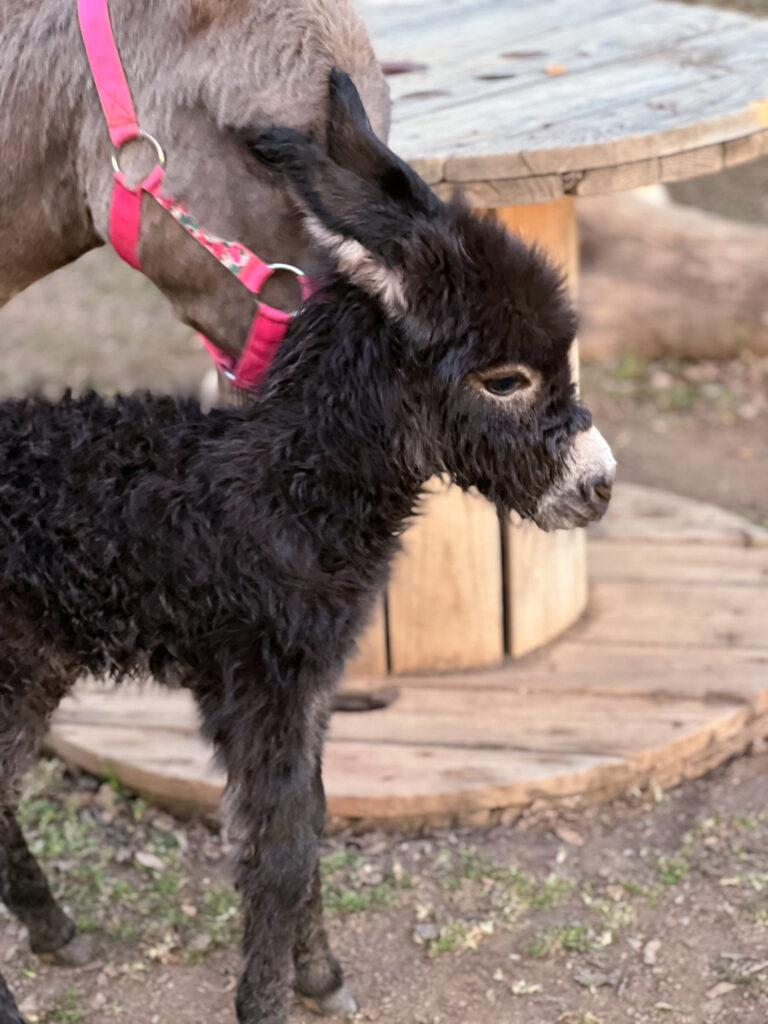
What do pregnant donkeys need?
It may be because I am a mother as well, but when breeding donkeys I always pay special attention to all of my pregnant mamas. Making another living thing inside of your body is a lot of invisible work, so I make sure my pregnant mamas are well-pampered both during and after gestation.
For the first 3/4 of the pregnancy, the mama donkeys will be fed as normal, assuming that they are already being fed a forage balancer. If not, this will need to be added. For the last 3 months of the pregnancy, they will need additional vitamins to ensure that the growing foal is receiving all of the proper nutrients, similar to humans taking prenatal vitamins! Whatever you decide to give your breeding donkeys, just make sure that it is rich in vitamins, minerals, proteins, and micronutrients, to ensure that all of your donkey mama’s needs are being met. Breeding donkeys will also need to be regularly de-wormed however because the last 3 months of the pregnancy are so important, you want to ask your vet before giving them any deworming medication during that time.
During the last month of gestation, the pregnant mama will be moved to a separate stall to prepare for birth. This stall should be extremely well-padded to ensure comfort during labor and should be in a place where the birthing mama will feel protected, and away from other animals. Because birth is a time when the mama is most vulnerable, it’s important to make her feel safe for a healthy and stress-free delivery. When delivery is close, your mama donkey will show swelling in her udder and may also see some waxy discharge from her teats. This means a baby donkey will be here soon!
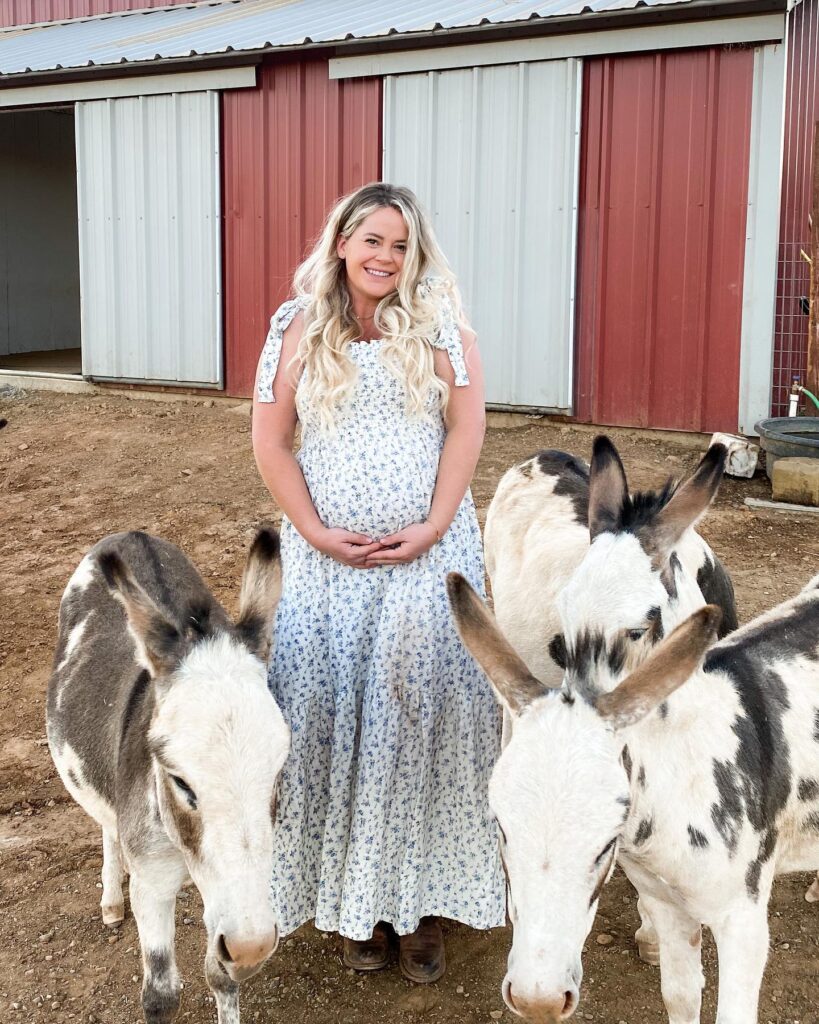
How long do donkey foals stay with their mothers?
Once the donkey foal has been born, the mama donkey will sever the umbilical cord and spend time licking the foal clean. This process is truly one of the best things to watch because it is the first bonding moment between mama and foal. Licking the foal will actually promote lactation for the mama and soon after being born and licked clean, you should see your foal stand and start to nurse. Breeding donkeys or any other kind of animal is so rewarding when you are able to witness and cherish these beautiful memories.
While nursing, you want to make sure that you maintain a healthy diet for your mama donkey so that her milk is full of nutrients for the nursing foal. The foal will get all of its nutrients from nursing until about 6 months after birth. When weaning time is getting closer, you may see the foal picking at its mama’s feed, which should be encouraged. This helps a lot when it comes time to full wean! It is suggested that you monitor the foal’s weight while nursing, to ensure that the foal is growing properly and getting a healthy and complete diet. If you see that your foal is gaining too much or not enough, you can either supplement or restrict their diet depending on the need.
After weaning, the donkey foals can be fed a diet that is high in fiber as well as has access to grazing until 2 years of age. This promotes healthy weight gain while the foal is developing into an adult donkey. Once the donkey is of age, whether male or female, eventually the process will start again. It has been such a pleasure breeding donkeys on our homestead. We hope that our mini donkeys bring you as much joy as they bring us!
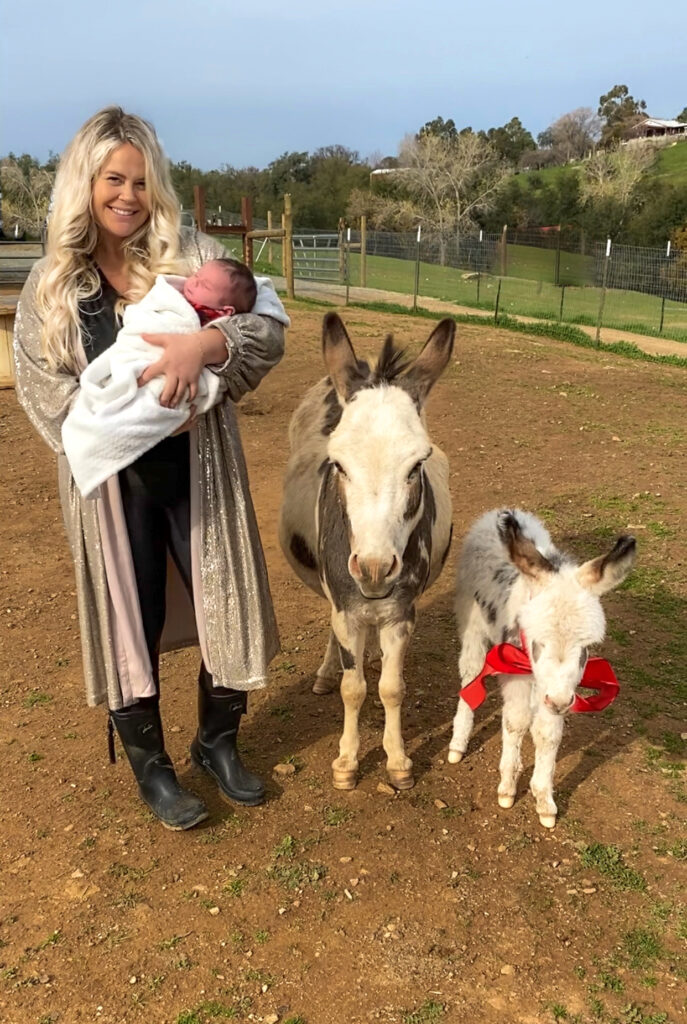
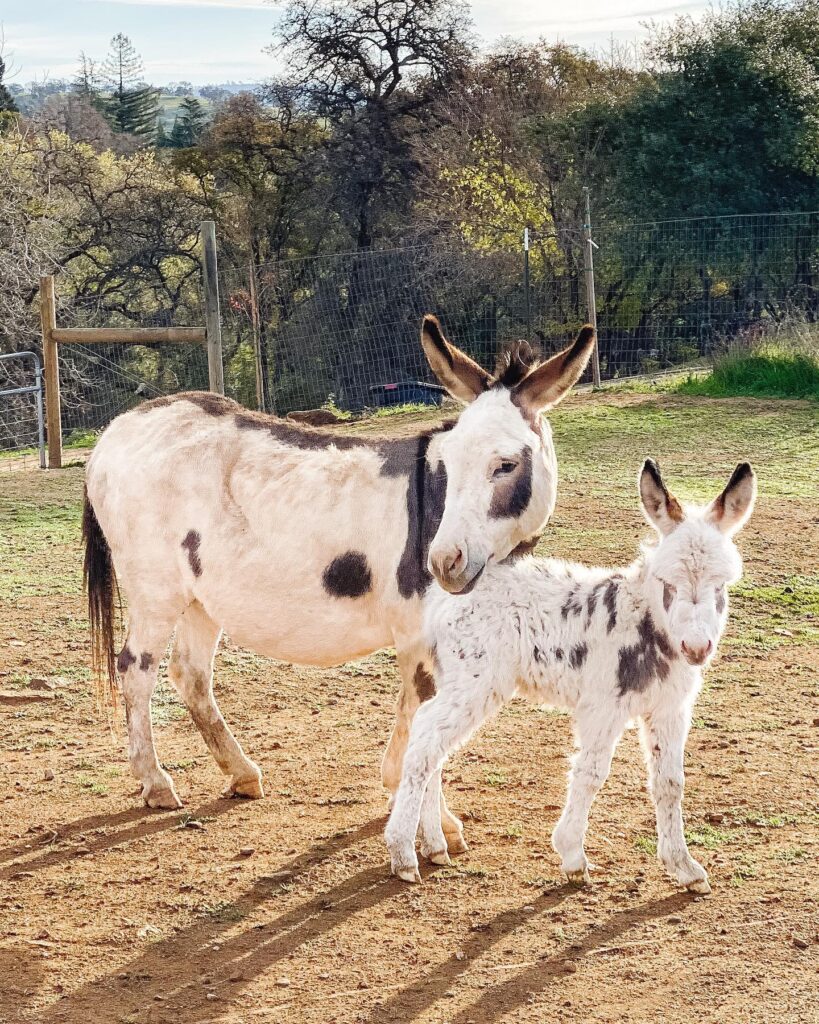
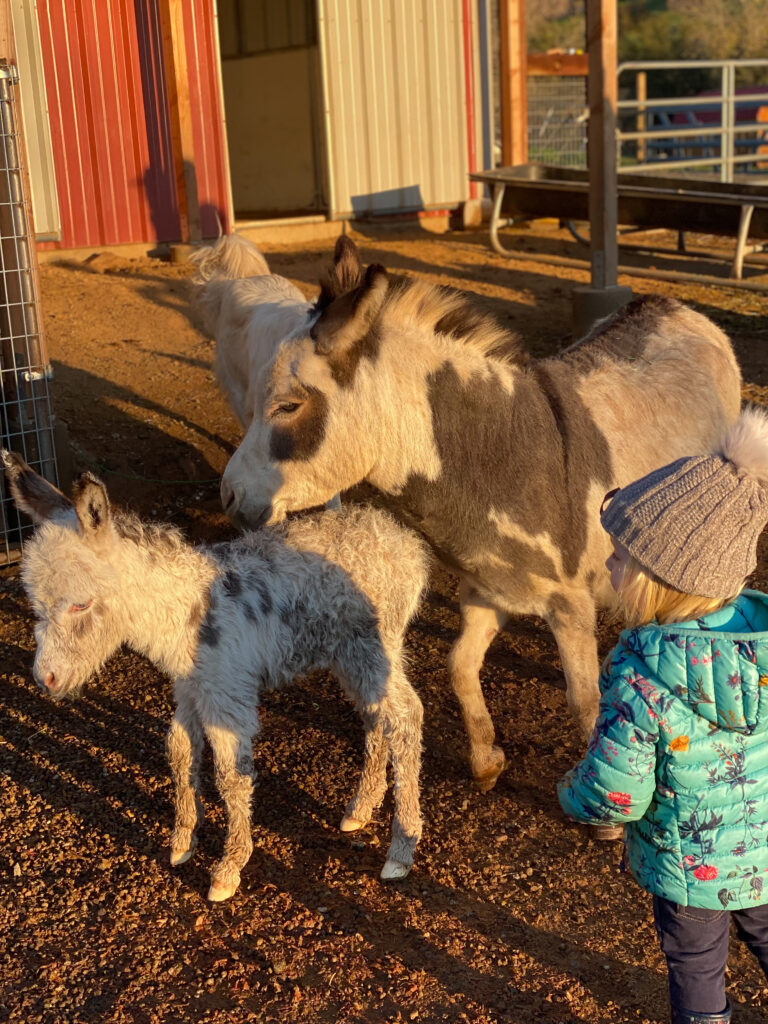
Do you have a donkey that you love? We would love to see! Share in the comments, friends.
Hugs,
Christina & Trevor
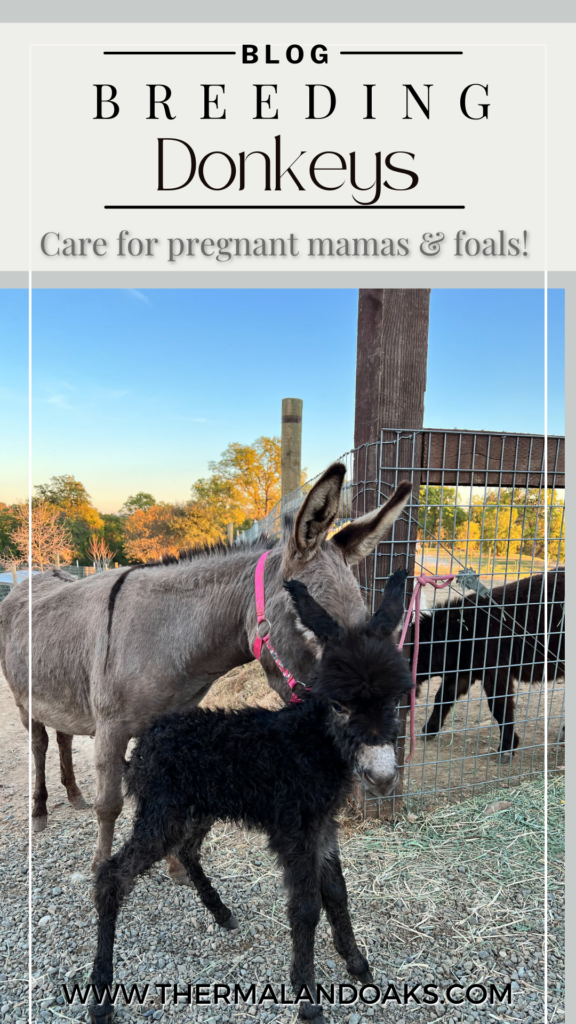
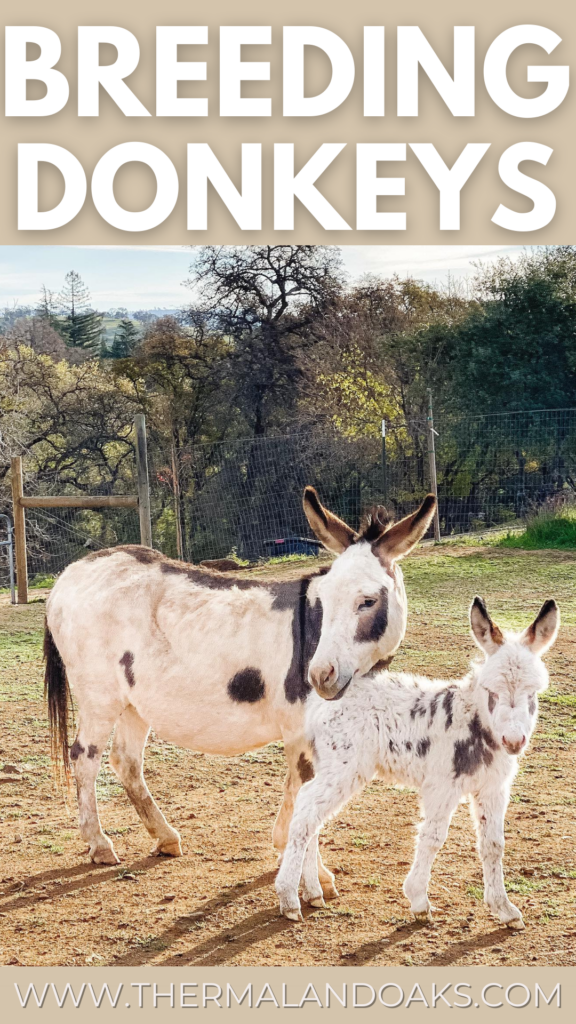
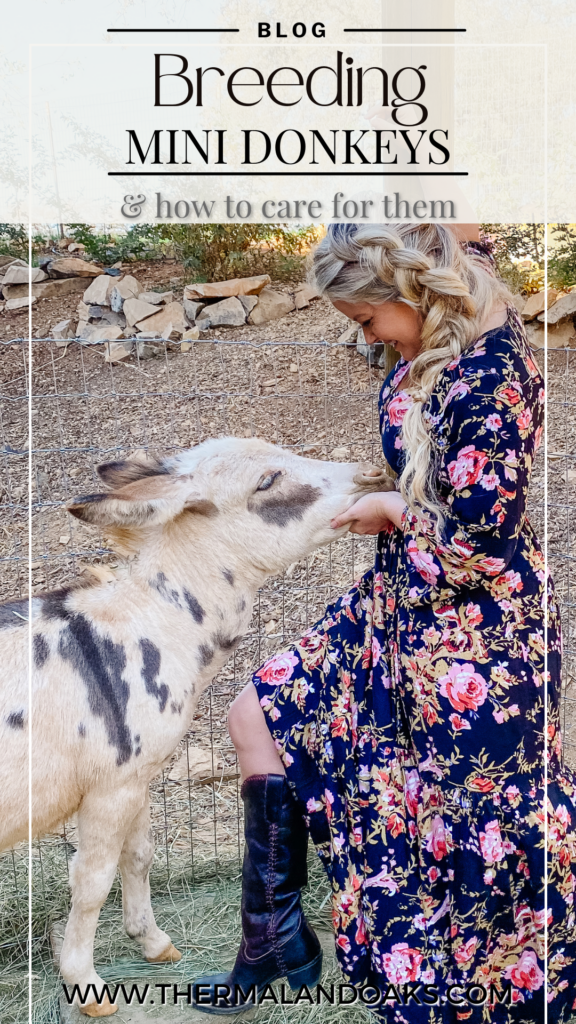
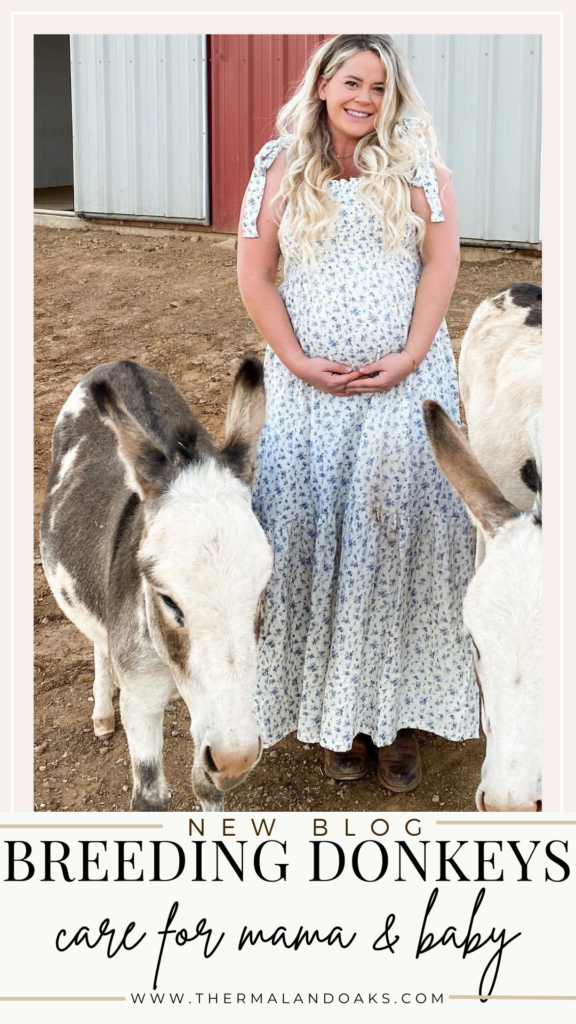
What We're
loving
Right Now
Looking for our favorite things? A place to shop our home room by room, or just catch up on what Christina's wearing / loving right now? Browse the TLO shop.
SHOP ALL


Leave a Reply Cancel reply
Christina
&
Trevor
Can We Send You Love Letters?
Our favorite way to stay in touch with you! When you join our weekly newsletter you get access to exclusive content, never-before-seen photos, your questions answered, and our favorite DIYs. Sign up below!
Follow Along on Instagram
Welcome to our online community where we've posted home, garden, DIY, fashion, renovations, recipes and family since the beginning.
@thermalandoaks
Pull up a chair
stay a while!
What's your fancy?
DIY
Animals
Recipes
Fashion
&
Holidays
Garden
Lifestyle
about
work with us
shop our home
Contact
Gift Guides
PLEASE COMMENT BELOW